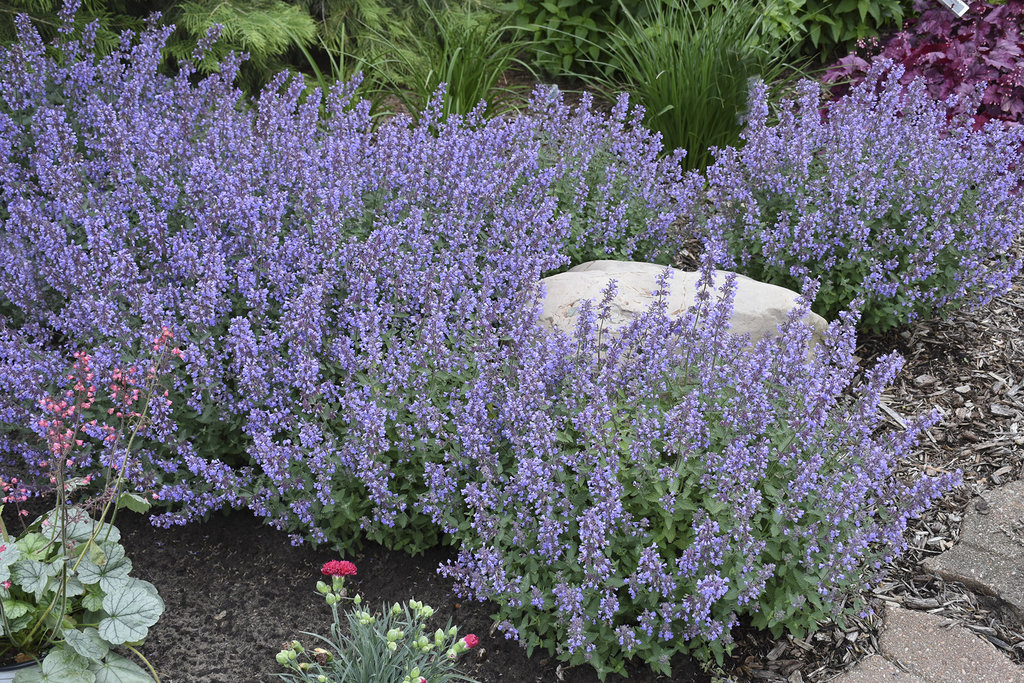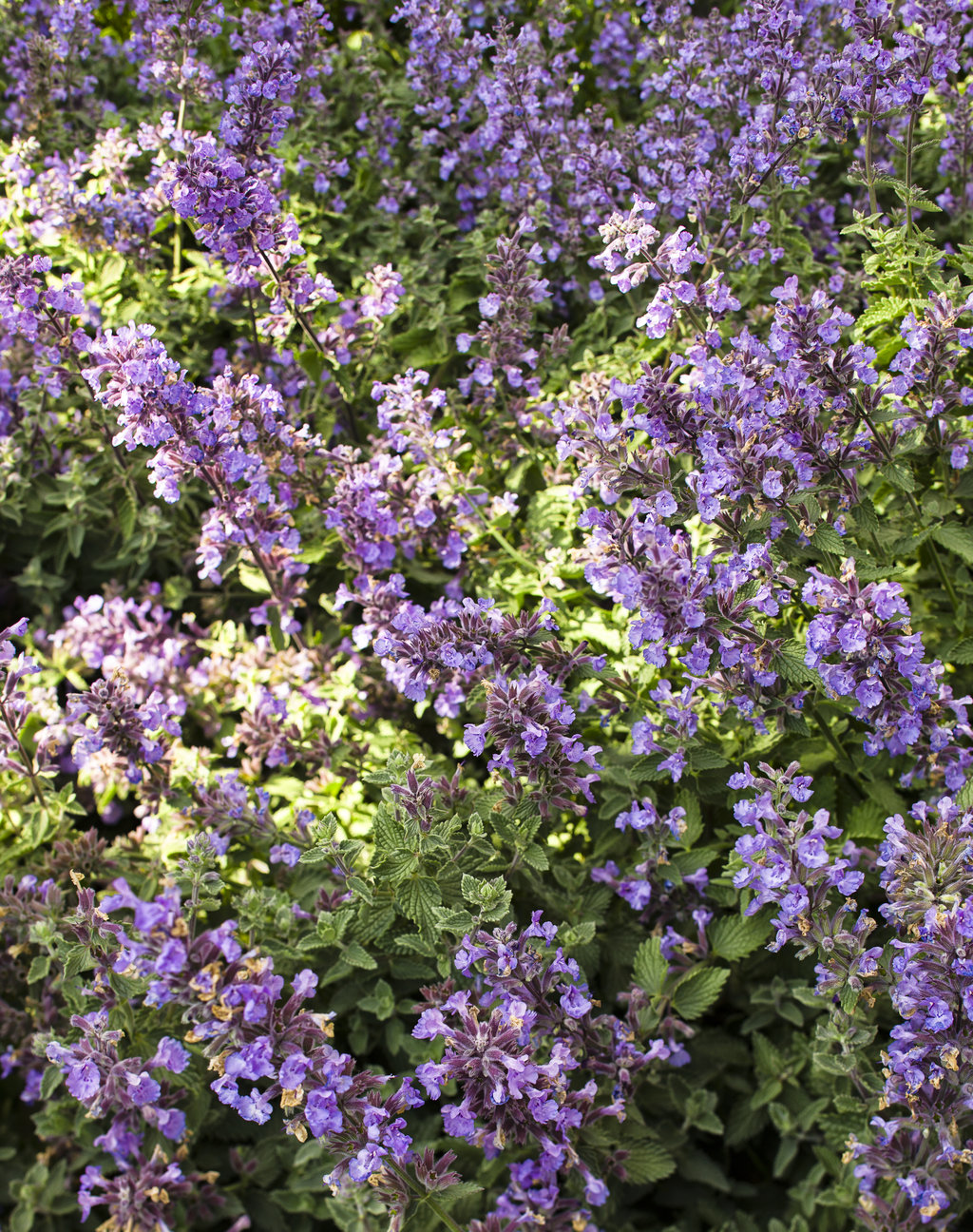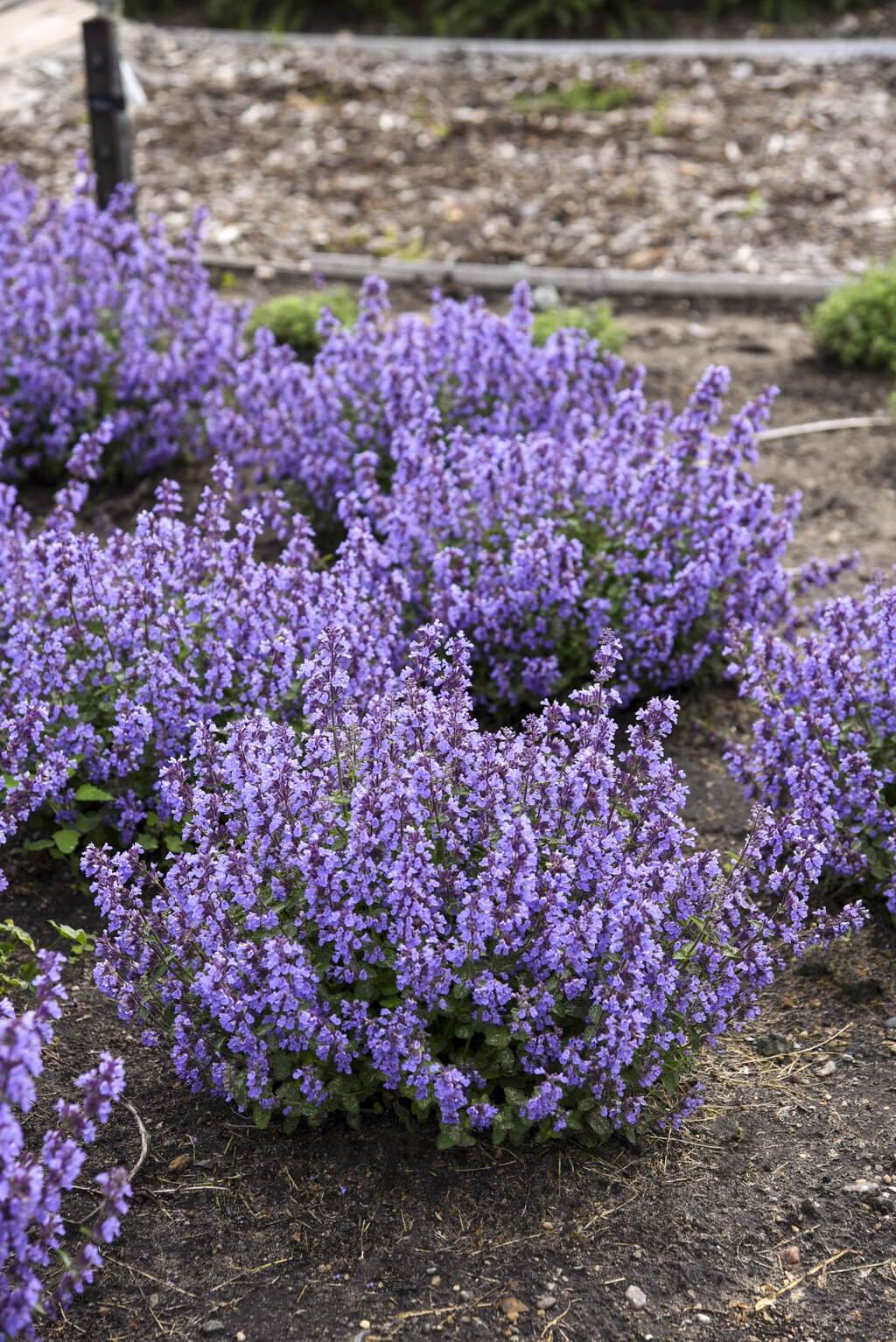Catmint - The Ultimate Growing Guide from Proven Winners®
Catmint is a carefree, easy-to-grow plant with an extra-long bloom time that deserves a spot in any landscape.
Buy catmint plants – Order perennials online and have them shipped right to your door

A reliable long-lived perennial, catmint (Nepeta) is a member of the mint family. It produces aromatic gray-green foliage and upright flower spikes in shades of lavender-blue, pink or white. Bloom occurs from late spring into fall, with the small tubular flowers attracting hummingbirds, bees, butterflies and other insect pollinators.
Catmint is drought tolerant and thrives on neglect, making it good for beginning gardeners, low-maintenance landscapes and water-wise borders. Hardy in USDA zones 3-8, plants are virtually pest and disease-free, while the mint-like scent repels deer and rabbits. Catmint's mounding or upright growth habit is perfect for mixed borders, as pathway edging, or in mass plantings.
PLANTING CATMINT & CATMINT CARE
How to plant: Catmint flowers best in full sun to partial shade, preferring some afternoon shade in warmer climates. Follow these steps and space plants 1 to 3 feet apart, depending on the variety.
- Loosen soil in the planting area and dig a hole slightly wider and deeper than the root ball.
- Remove the catmint plant from the nursery pot and tease out roots if potbound.
- Set the plant in the hole with the base level with the soil.
- Backfill the hole with soil and tamp down slightly to remove air pockets. Water well.
Soil: Catmint grows easily in most soil types, including rocky or clay soil. Plants will perform best in well-draining soil to prevent root rot. For containers, use a high quality all-purpose potting mix.
Watering: Provide regular water during the first growing season. Catmint is drought tolerant once the root system is established, needing little or no supplemental water. During extreme heat or prolonged dry spells, water as needed.
Fertilizing: Catmint does best with little or no supplemental fertilizer. Mulch new plants around the base with a thin layer of compost. Overfertilizing can cause fewer flowers or plants to flop.
Pruning: Some varieties of catmint may become leggy or flop open at the center. After initial flowering, shear plants as needed to encourage a bushier habit and rebloom later in the growing season.
TRY THESE PROVEN WINNERS® VARIETIES
Try these varieties in your landscape:
|
|
CATMINT FAQ’s
Is catmint the same as catnip?
Though the scent of both plants are attractive to cats, hence the name, catnip belongs to a different species (Nepeta cataria). Catnip has a more compelling scent, while catmint has more ornamental value in the landscape.
How much sun does catmint need?
For best flowering, catmint needs at least 6 hours of full sun per day.
When to plant catmint?
Plant catmint in the garden during the cooler months of spring or fall after all danger of frost is past.
Is catmint invasive?
Catmint is not considered invasive, though catnip, its close relative, can be weedy and somewhat invasive in the right growing conditions.
Is catmint edible?
The minty flavored leaves of catmint are commonly used in herbal teas and are thought to have various health benefits. Catmint uses also include the addition to fresh salads or cooked food.
How tall does catmint get?
Size depends on the variety, with plants reaching 1 to 3 feet tall.
Is catmint the same as lavender?
Both catmint and lavender are members of the mint family (Lamiaceae), but belong to different genera (Nepeta vs. Lavendula). Lavender is more commonly grown for its scent and is valued for a wider range of uses.
Related: Lavender or Catmint – What Makes the Perfect Purple Edge?
HOW TO USE CATMINT IN YOUR LANDSCAPE
The extra-long bloom time and ability to thrive in different growing conditions make catmint a versatile addition to any landscape. Here’s how to use catmint in your garden.
- Plant in a curbside strip in combination with other drought-tolerant perennials such as lavender, salvia, agastache, sedums and ornamental grasses.
- Include catmint in an herb garden alongside other drought-tolerant herbs such as rosemary, Russian sage, thyme and oregano.
- Substitute catmint for lavender in colder climates where lavender won’t grow.
- Use a low-growing catmint variety as an edging plant along a pathway for color all summer long.
- Create a habitat garden with catmint and other pollinator plants such as milkweed, sunflower, aster, bee balm and coneflower.
- Mass a spreading type along a slope for easy-care, drought-tolerant erosion control.
- Plant a low-growing variety along a rock wall, allowing it to spill over the edge.
- Combine a dwarf variety in a container with creeping sedum, lantana and verbena.
- Roses are a classic companion to catmint. Use a low-growing variety of catmint as a groundcover around rose bushes.
- Adorn a rock garden with catmint and groundcover plants like sedum, creeping phlox, ice plant (Delosperma) and small sedges.
CATMINT COMPANION PLANTS
Plant catmint alongside other plants with similar cultural needs of full sun and good drainage.
For a water-wise border, plant with:
- Sweet Romance® lavender
- Mango Tango anise hyssop
- ‘Pink Profusion’ salvia
- ‘Little Goldstar’ black-eyed Susan
For complementary color, pair with yellow flowers that bloom at the same time:
- Uptick™ Yellow & Red tickseed
- ‘Firefly Sunshine’ yarrow
- Rainbow Rhythm® ‘Going Bananas’ daylily
- ‘Tuscan Sun’ perennial sunflower
For a pollinator-friendly summer border, combine with:
- ‘Pardon My Lavender’ bee balm
- Cinderella swamp milkweed
- Pugster Periwinkle® butterfly bush
- ‘Serendipity’ ornamental onion



 ‘Cat’s Meow’
‘Cat’s Meow’  ‘Cat’s Pajamas’
‘Cat’s Pajamas’
